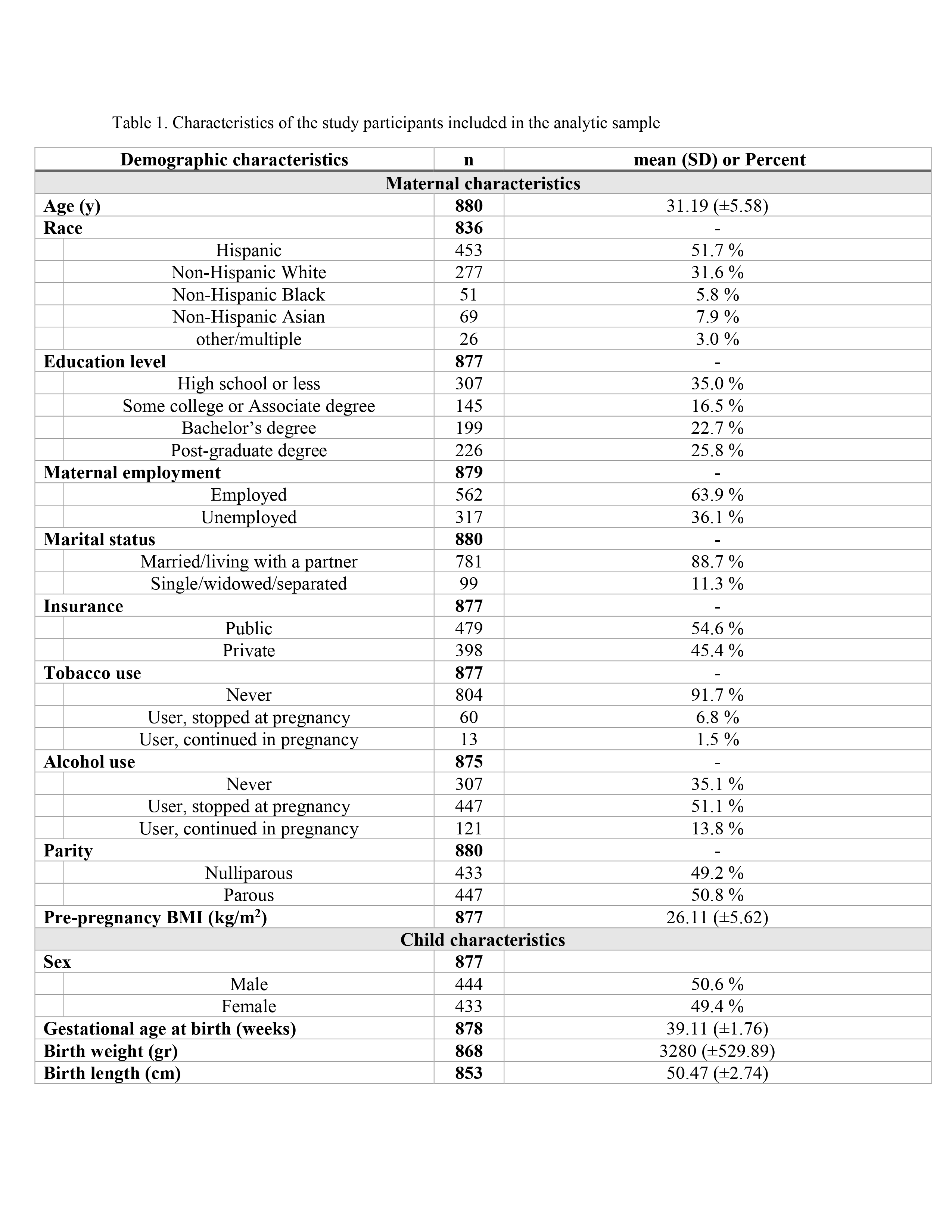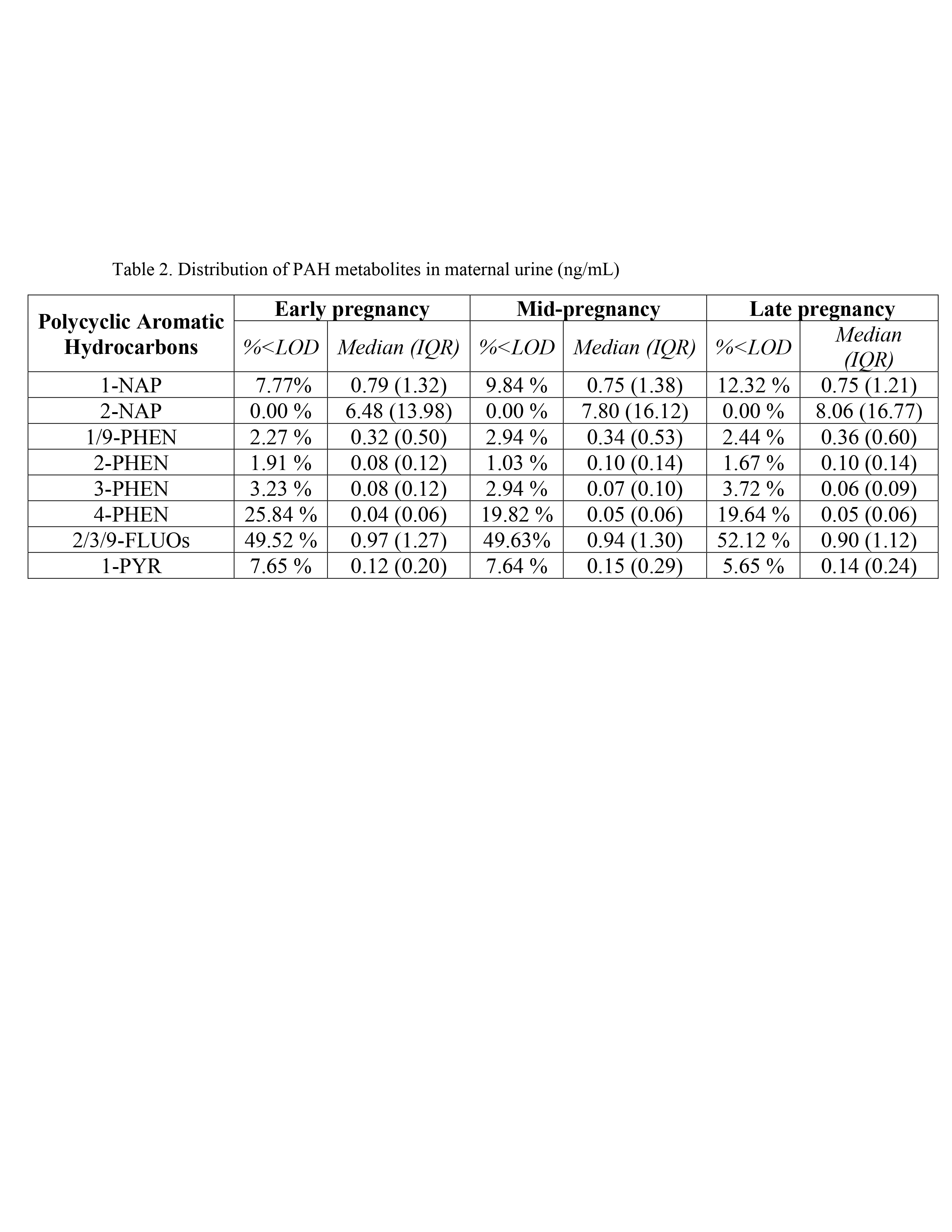Environmental Health
Session: Environmental Health
242 - Prenatal Polycyclic Aromatic Hydrocarbons Exposure and Child Weight and Adiposity from 1 to 4 Years of Age: A Longitudinal Study
Saturday, May 4, 2024
3:30 PM - 6:00 PM ET
Poster Number: 242
Publication Number: 242.1243
Publication Number: 242.1243
- SS
Sarvenaz Shahin, MD-MPH (she/her/hers)
New York University Grossman School of Medicine
New York, New York, United States
Presenting Author(s)
Background: Childhood obesity affects 1 in 5 U.S. children, posing a significant risk to their short- and long-term health. Polycyclic Aromatic Hydrocarbons (PAHs) are a class of endocrine disrupting chemicals (EDCs) that have shown adipogenesis properties, altering lipid homeostasis and estrogenic activity. Exposure to these chemicals during the prenatal period may disrupt fetal development programming and contribute to childhood obesity, although this relationship remains underexplored.
Objective: To study the association of prenatal exposure to PAHs across pregnancy and early childhood weight and adiposity measures
Design/Methods: In NYU Children’s Health and Environment Study, a New York City birth cohort (2016-2019), we studied 880 mother-child pairs for maternal urinary PAH metabolites in early, mid, and late pregnancy and child weight, height, triceps, and subscapular skinfold thicknesses at 1, 2, 3, and 4 years of age. We accounted for urinary dilution by adjusting for urinary creatinine (Cr) and substituted a fixed value of LOD/√2 for chemicals with less than 10% of values below the limit of detection. We used linear mixed models to investigate the association between average and trimester-specific prenatal exposure to PAHs and the z-scores of repeated child adiposity measures. We added an interaction term between exposure and sex to assess sex-specific associations. We controlled for False Discovery Rate (FDR) by Benjamini-Hochberg method.
Results: We observed a positive association between average maternal urinary concentrations of 2-Hydroxyphenanthrene (2-PHEN) and child weight (effect estimate [95% CI] per Ln unit increase in Cr-adjusted chemical = 0.104 [0.001, 0.207]) and body mass index (BMI) z-scores (0.131 [0.012, 0.250]). No association was observed between average exposures and skinfold thicknesses. In trimester-specific analyses, third trimester 1,9-PHEN was inversely associated with weight (-0.107 [-0.203, -0.011]) and BMI (-0.112 [-0.224, -0.001]). First trimester exposures to 2-PHEN (0.206 [0.086, 0.324]) and 3-PHEN (0.127 [0.016, 0.237]) were associated with higher triceps skinfold thickness. After FDR correction, only the association of first trimester 2-PHEN with triceps skinfold remained significant. We observed no sex interaction.
Conclusion(s): In this large diverse sample of children in NYC, we found little evidence for associations of prenatal PAH exposure and developmental programming of child adiposity. This study contributes to the growing body of evidence exploring EDCs as modifiable risk factors for childhood overweight and obesity.


